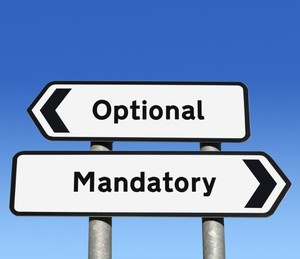The US Food and Drug Administration (FDA) wants to enhance the utility of the Orange Book to foster drug competition.
The FDA’s Approved Drug Products with Therapeutic Equivalence Evaluations Publication or ‘Orange Book’ lists pharmaceuticals and their generics equivalents. It includes patent and exclusivity information and identifies whether a drug is currently being marketed or has been discontinued. The publication is widely used by both the regulatory community and by physicians in order to identify which drugs are substitutable for one another [1].
FDA wants to ensure that the Orange Book provides as much utility as possible to aid manufacturers as they allocate resources towards the development of new generics. It therefore announced on 30 January 2019 several new steps it will be taking to ensure that the Orange Book provides the greatest benefit to patients and providers, and generics’ developers.
The first of these steps is the issuing of new draft guidance to provide clarity on the specific categories and descriptions of the information that applicants are required to share with FDA on the marketing status for their brand-name and generic drugs and how to provide it in a timely and consistent manner.
Marketing Status Notifications Under Section 506I of the Federal Food, Drug, and Cosmetic Act; Content and Format
Date: January 2019
www.fda.gov/downloads/Drugs/GuidanceComplianceRegulatoryInformation/Guidances/UCM630099.pdf
FDA says that having timely, accurate information about what drugs are being actively marketed will improve transparency around circumstances where generics competition is lacking. It will also help FDA better understand circumstances where generics are being approved, but not marketed so that the agency can consider any policy reasons why this may be occurring.
During 2019, FDA will also be taking other actions to enhance the Orange Book. Specifically, the agency intends to issue draft guidance for industry, describing how FDA evaluates therapeutic equivalence (TE) and assigns therapeutic equivalence codes, which are published in the Orange Book. This, it says, ‘will be particularly beneficial for those seeking to develop generic drug products for harder-to-copy complex drugs that often face greater scientific and regulatory challenges and thus often have less competition’.
The agency also intends to issue a draft guidance to assist drug product applicants and approved application holders in using the Orange Book, which will provide answers to commonly asked questions. The agency will also be soliciting public comment on the Orange Book use and potential enhancements, including a re-examination of what pharmaceutical patents should be listed in the Orange Book.
FDA says that it wants the generics industry ‘to be as competitive as possible to help ensure consumer access to more affordable medicines’ but at the same time the ‘market must also be sustainable’. The agency says, therefore, that, in addition to taking action to enhance generics competition, it is also working to make generics development more efficient and predictable.
Related article
FDA issues draft guidance on tentatively approved ANDAs
Reference
1. GaBI Online - Generics and Biosimilars Initiative. FDA debuts purple book for biologicals and interchangeable biosimilars [www.gabionline.net]. Mol, Belgium: Pro Pharma Communications International; [cited 2019 Feb 8]. Available from: www.gabionline.net/Biosimilars/General/FDA-debuts-purple-book-for-biologicals-and-interchangeable-biosimilars
Permission granted to reproduce for personal and non-commercial use only. All other reproduction, copy or reprinting of all or part of any ‘Content’ found on this website is strictly prohibited without the prior consent of the publisher. Contact the publisher to obtain permission before redistributing.
Copyright – Unless otherwise stated all contents of this website are © 2019 Pro Pharma Communications International. All Rights Reserved.








 0
0











Post your comment